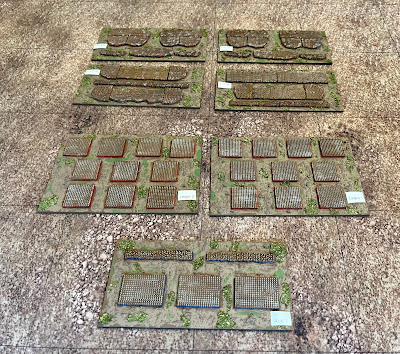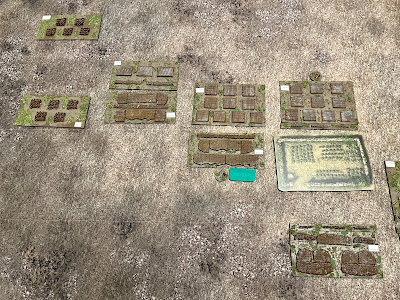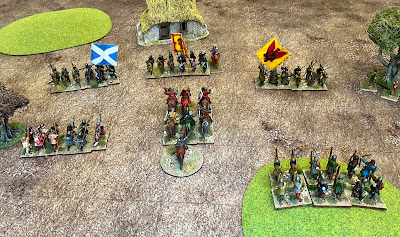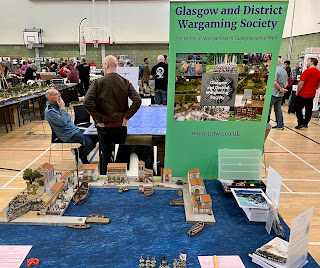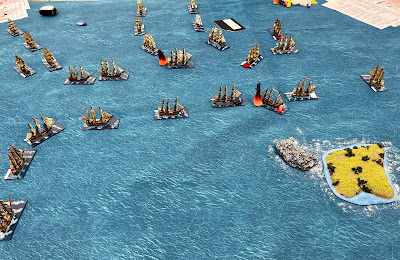In my new book, The Frontier Sea, I cover Russian attempts to capture Ragusa (Dubrovnik) in 1806. This includes the Battle of Bergatto Heights, which is also a wargame scenario in the appendix to the book.

My primary source for this little-known campaign was the memoirs of V. Bronevskiy, a Russian naval officer (Northern Tars in Southern Waters, Helion, 2019), who served with the Russian fleet in the Adriatic. While he covers the Battle of Bergatto Heights in some detail, he quickly skims over the earlier actions around Old Ragusa (Cavtat), where the Russians landed and the subsequent siege of Ragusa. I am therefore grateful to the Croatian archaeologist Nikola Cesarik for pointing me to an article published in the Croatian journal Kolo, War around Dubrovnik in 1806. This article covers the diary of an Italian observer of the events of 1806, Francesco Maria Appendini. It is confusing in places (he couldn’t have been at every action), but it adds to our understanding of the campaign. Old Ragusa (Cavtat) is 20km south of Ragusa (Dubrovnik), a modern tourist spot near the airport.
The first clash was south-east of Old Ragusa on 30 May, where 300 French troops clashed with a similar number of Montenegrins around Tarcikovac. It appears to have been a running skirmish lasting around five hours, with limited casualties, other than an unfortunate French sergeant whose severed head was subsequently recovered and sent to Ragusa by locals for the reward.
On 3 June, the Russians landed around 150 troops from a frigate, successfully attacking French batteries near Ragusa. They were supported by gunfire from the frigate, naval gunfire being a key element of Russian strength in this campaign. However, this does not appear to have been a significant landing attempt, as the action then shifted back to Old Ragusa, presumably because the Russians needed a harbour.
There appears to have been some further fighting south of Old Ragusa, which also involved Ottoman troops (the border was close to the coast here), barring the passage of Montenegrin and Russian troops. However, the French decided that Old Ragusa could not be defended and built several batteries along the coast to delay the Russian and Montenegrin advance towards the Bagratto Heights. The diary doesn’t say which Russian units were involved, but based on Bronevskiy, it was probably detachments from the Vitebsk Musketeers and 13th Jager Regiment, commanded by Major Zvyagin.
Appendini doesn’t have much to say specifically about the Battle of Bagratto Heights and merges it with several clashes inland involving the Montenegrins and on the coast where Russian naval firepower was critical again. His main narrative moves to the siege of the city, where the Russian batteries were established on the heights above the city. Anyone who has visited the city can only wonder at the effort involved by Russian sailors to get heavy naval guns up to those heights. A feat repeated by British sailors in 1814. The Montenegrins focused on plundering the surrounding area, and there were several sallies by French and Ragusan troops to dislodge Montenegrin sharpshooters.
 |
| The walls of Ragusa |
The main Russian effort was to capture the island of San Marco, which dominates the approaches to Ragusa harbour. 600 Russian naval infantry and a company of Jagers landed on the island supported by gunboats. However, the French fort on the island was too strong, and the Russians withdrew, with 13 killed and 57 wounded.
The diary describes the deprivations of the citizens starving and short of water in the city. This was relieved when Molitor’s French column arrived. The Russians began a withdrawal to Old Ragusa, where they embarked while the Montenegrins headed home with their plunder. Appendini was understandably not a fan of the Montenegrins, who he says, ‘The passion for stealing runs in their blood.’
As military history goes, the diary is a difficult and confusing read. However, it adds much more detail than we have from other sources and is certainly more objective than Bronevskiy. I will certainly be taking it with me on my next visit. For the wargamer, the many skirmishes he describes are ideal for small actions using rules like Sharp Practice or Rebels and Patriots.

